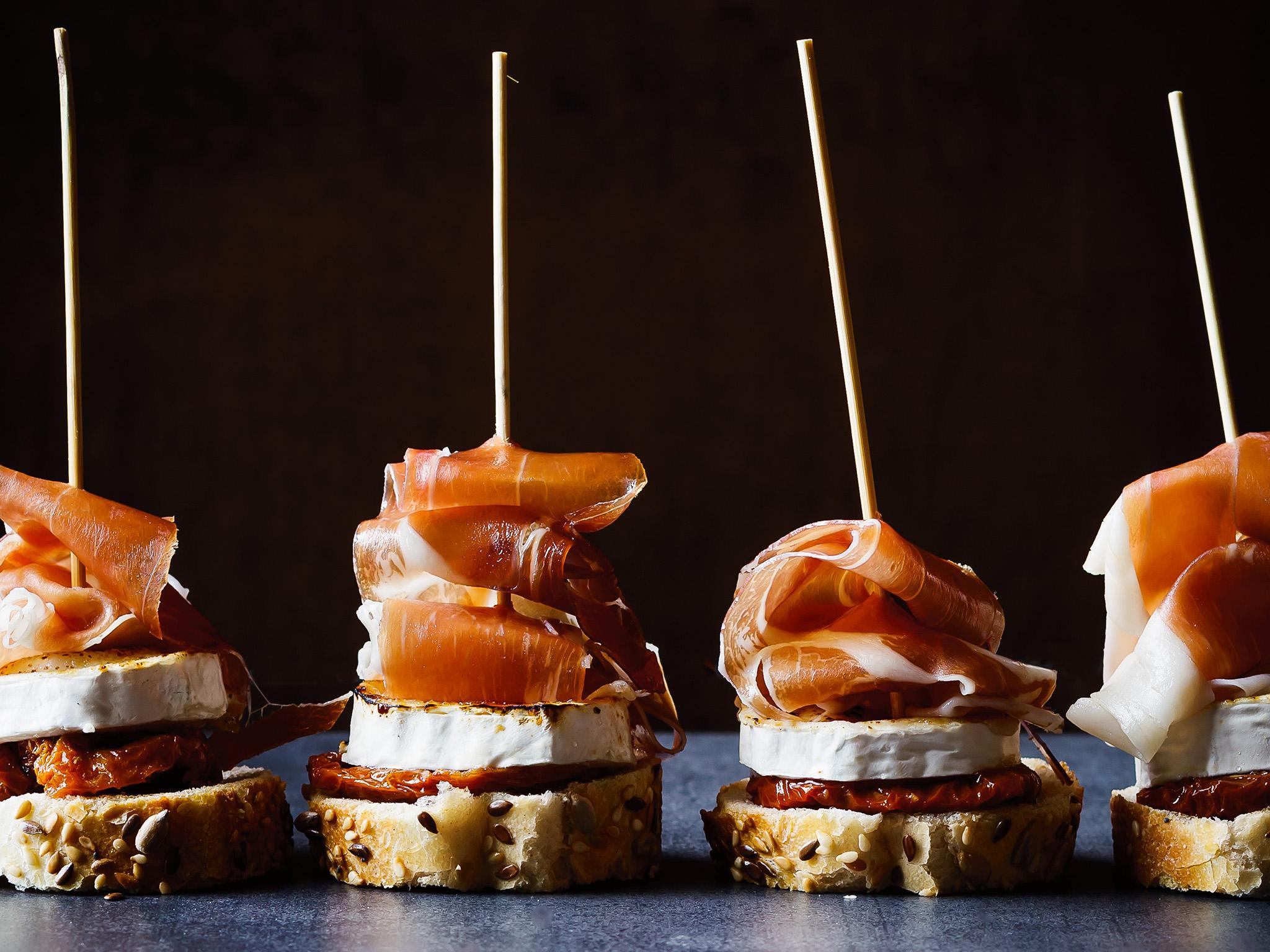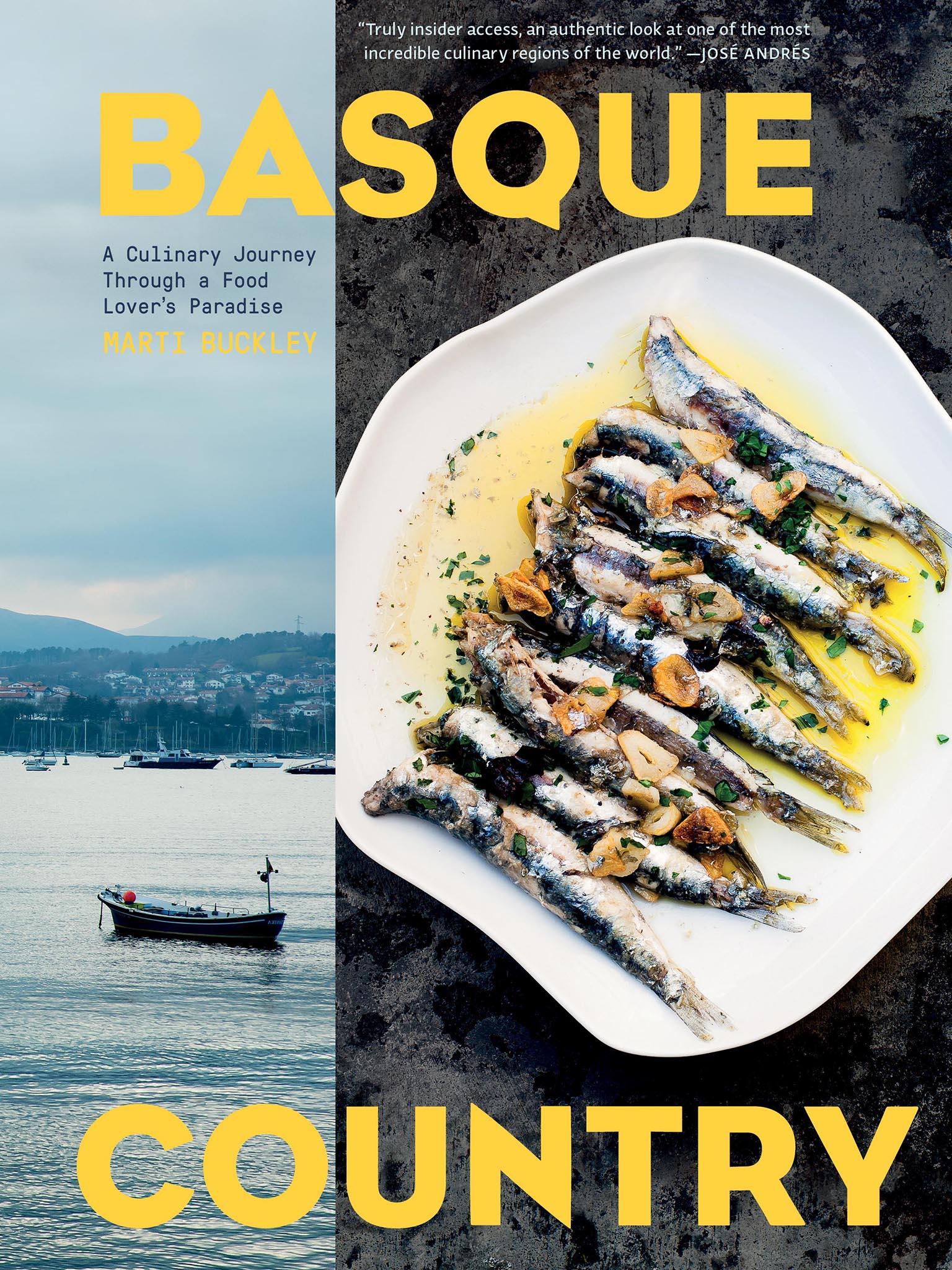The history of the humble Basque Country's pintxo
These bar snacks are traditionally held together by toothpicks, and are the Basque Country’s piste de la resistance when it comes to food

Anyone who has ever been to the Basque Country area will recognise these snacks and will have had them, accompanied by a crisp bottle of red, or a aperitivo.
Here, Marti Buckley documents the history of the snack, from it’s early beginnings almost 100 years ago, and how, as they become more popular, food companies cashed in with frozen versions to today, where creativity makes them more exciting than ever.
And we also share a recipe from Buckley's new book, Basque Country, the Spanish ham, goats cheese and sun-dried tomato pintxo.
1920 to 1940: Drinking outside of the home was an established social custom well before the Spanish Civil War. People would head to the cider houses and bodegas in the old part of San Sebastián to buy their alcohol (for their home or business) and would make the most of the trip by downing a few drinks.
1940 to 1960: Post–Spanish Civil War, txikiteo, the practice of travelling from bar to bar with a kuadrilla (a group of close friends), becomes routine. Kuadrillak meet at the same bar to begin the same route every night, ultimately consuming up to thirty small glasses (about a bottle) of wine a head in the process. Luckily, the wine is very cheap, around 7 pesetas (about 4 cents in today’s currency).
There is also widespread scarcity. A few bars, many of them under the same ownership today, innovate by putting out a bit of food on the bartop. Bar Martinez, on Calle 31 de Agosto in San Sebastián, is one of them.
Much of the food and some of the alcohol available in the bars are contraband, smuggled from France. The police never take action, and luxuries like txaka (canned crab), unseen before it appeared on the bar of Borda Berri, dot the bars of the city.
The movie Gilda arrives in Spain, and is later the inspiration for the name of what is often purported to be the first pintxo. A banderilla-style bite costs around 3 pesetas (a current value of 2 euro cents). Summer visitors from the interior of Spain are the ones who begin to refer to these toothpick-held pickles as pinchos.
1960 to 1980: Life begins to get a little easier. Supply chains open up, and bars begin to develop their food offerings. Each bar has a specialty. The name “pincho” begins to catch on and circulate, but with a Basque spelling: pintxo.
Though the name “pintxo” has not yet reached Bilbao, familiar-looking bites begin to appear in the city’s bars, among them the bilbainito, hard-boiled egg with mayonnaise and shrimp; el grillo, a piece of potato with lettuce and onion; and chunks of olive oil–preserved albacore to be grabbed with a toothpick. On Sundays, there are bars that serve fried calamari, or even kroketak (croquettes). The food is served off in a corner, however, not atop the bar.
In San Sebastián, the pintxo is in its full splendor, and the local municipal law enforcement doesn’t know how to handle it. In the 1960s, hefty fines for setting out plates of uncovered pintxos are established—25,000 pesetas (about 150 euros today). Glass cases appear in the bars to cover the pintxos.
Bars begin to become known for their specialties: anchovies, eggs, tripe, salt cod, and more. As the pintxo business becomes more lucrative, frozen food companies begin to hock premade croquettes to bars willing to accept them.
1980 to 2000: Creativity replaces necessity as the inspiration for pintxos as the country becomes more prosperous. Innovations such as puff pastry and egg yolks on top of mushrooms begin to spread.
Cocina en miniatura takes hold in the late 1980s. A few of San Sebastián’s bars, Aloña Berri in the Gros neighbourhood in particular, begin to offer miniature works of art, cooked to order. This concept attracts crowds.
Meanwhile, in Bilbao, the pintxo with bread appears, along with mushrooms and peppers. One of the first bars to bring the pintxo to Bilbao was Oriotarra. The book Pintxos Donostiarras by Pedro Martin Villa is released in 1992. The longest-running pintxo competition, El Concurso de Pintxos (Pintxo Txapelketa Bilbao Bizkaia), holds its first event in Bilbao in 1999.
A bar on Portu Kalea in San Sebastián begins putting out pintxos made with unorthodox combinations of ingredients, derided as “senseless mixtures” by traditionalists, but the format is quickly copied when it proves successful.
2000 to present: Txikiteo becomes less common, a change attributed to a trend towards “cleaner” living, as well as older generations passing away and wine prices rising. It is normal to see groups of couples and friends drinking and eating pintxos for dinner, rather than groups of men drinking glass after glass of wine.
Bar owners retire and pass on their bars sometimes to outsiders. These newcomers have a more global outlook; the chefs are trained in Michelin-starred kitchens. The global explosion in popularity of pintxos and rising number of visitors to Basque Country keeps the bars full, especially in summer.
Spanish ham, goats cheese and sun-dried tomato pintxo
Often, when a new pintxo meets with success, it begins to pop up in other bars across town. Then it travels to a neighboring capital, trickles down to village bars, and so on, until it becomes a ubiquitous classic. That is the case with this pintxo, an easy-to-love combination of sweet sun-dried tomato, caramelized goat cheese, and soft, nutty ham, which is much greater than the sum of its parts. The original version of this pintxo was made with a seeded baguette from one of San Sebastián’s best bakeries, Galparsoro. A regular baguette will also do. Splurge, if you can, on the best jamón.
Makes 9
60 ml white wine vinegar
Kosher salt
28 g dehydrated
sun-dried tomatoes (see Note)
2 tablespoons extra-virgin olive oil
250 to 315g goats cheese, preferably with rind, chilled
1 tablespoon sugar
9 slices Ibérico ham
½ baguette, preferably covered in poppy, flax, or other seeds, cut into nine ½-inch-thick (1.5 cm) slices
In a small saucepan, combine the vinegar, 120 ml water, and a pinch of salt. Bring to a boil over medium-high heat. Place the sun-dried tomatoes in a bowl, pour the hot vinegar mixture over, and cover with plastic wrap. Soak for at least 15 minutes and up to 2 hours, until very soft. Drain, transfer to a plate, and drizzle with the olive oil. Set aside.
Preheat the broiler. Line a baking sheet with foil.

Slice the goat cheese crosswise into 9 pieces, each about 2 cm thick. Arrange on the prepared baking sheet. Sprinkle the tops with the sugar. Place the baking sheet under the broiler and allow the sugar to brown, watching closely so the cheese doesn’t burn. Once lightly browned and sizzling, remove from the oven. (Alternatively, you can use a kitchen torch to brown the cheese: Hold the flame over each slice until the sugar is bubbling and beginning to brown.)
To compose the pintxos, arrange the baguette slices on a platter and place a sun-dried tomato on each slice. Using a spatula, place one slice of the goat cheese on top of each tomato, sugared-side up. Thread a piece of the ham on a skewer, forming an “S” shape. Spear the cheese, tomato, and bread with the skewer, adjusting the ham if necessary. Repeat with the remaining ham and skewers and serve.
Note: you can also use oil-packed sun-dried tomatoes, in which case you can skip the soaking step.
Extracted from 'Basque Country' by Marti Buckley (Artisan Books) £26.99
Join our commenting forum
Join thought-provoking conversations, follow other Independent readers and see their replies
Comments
Bookmark popover
Removed from bookmarks